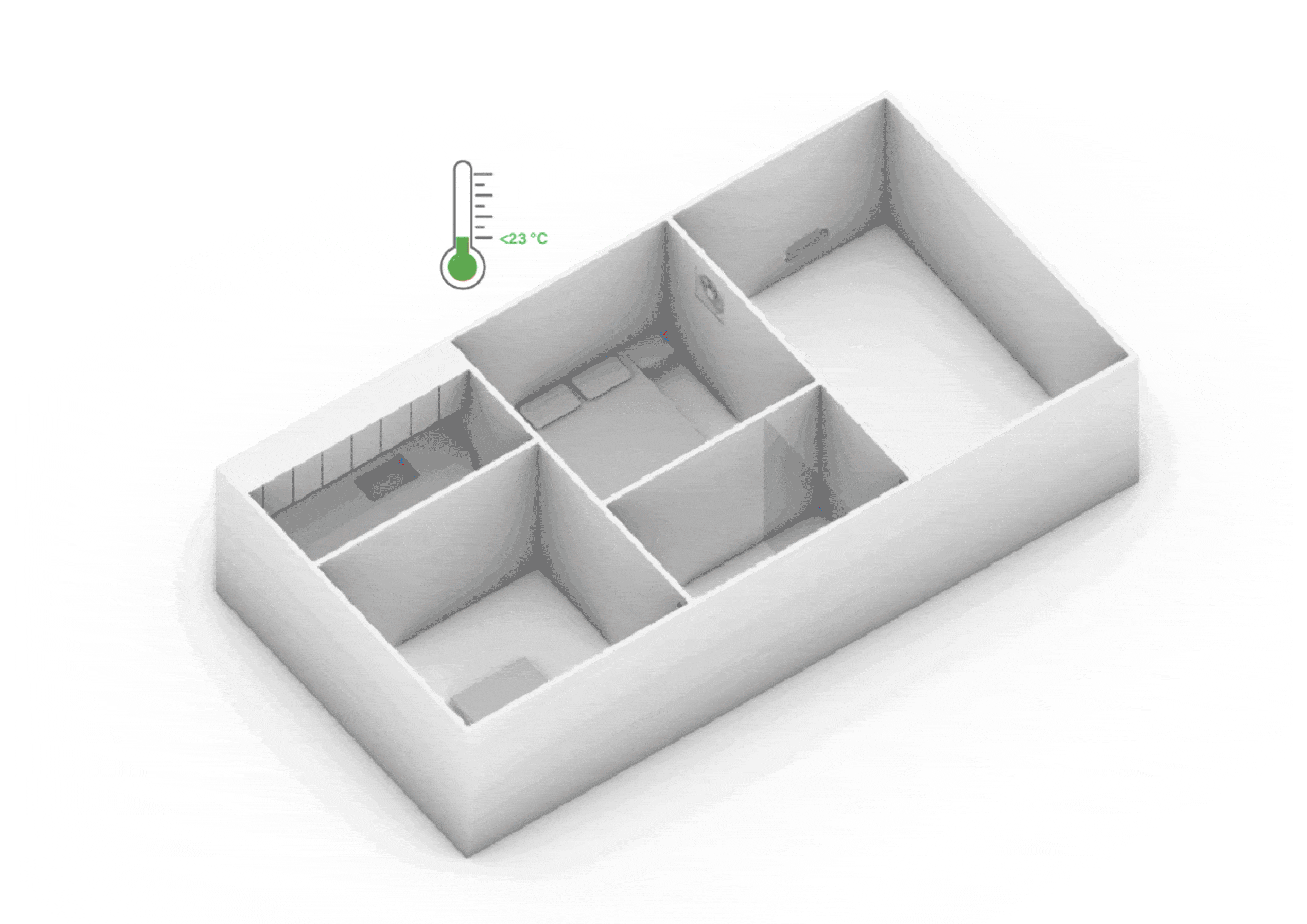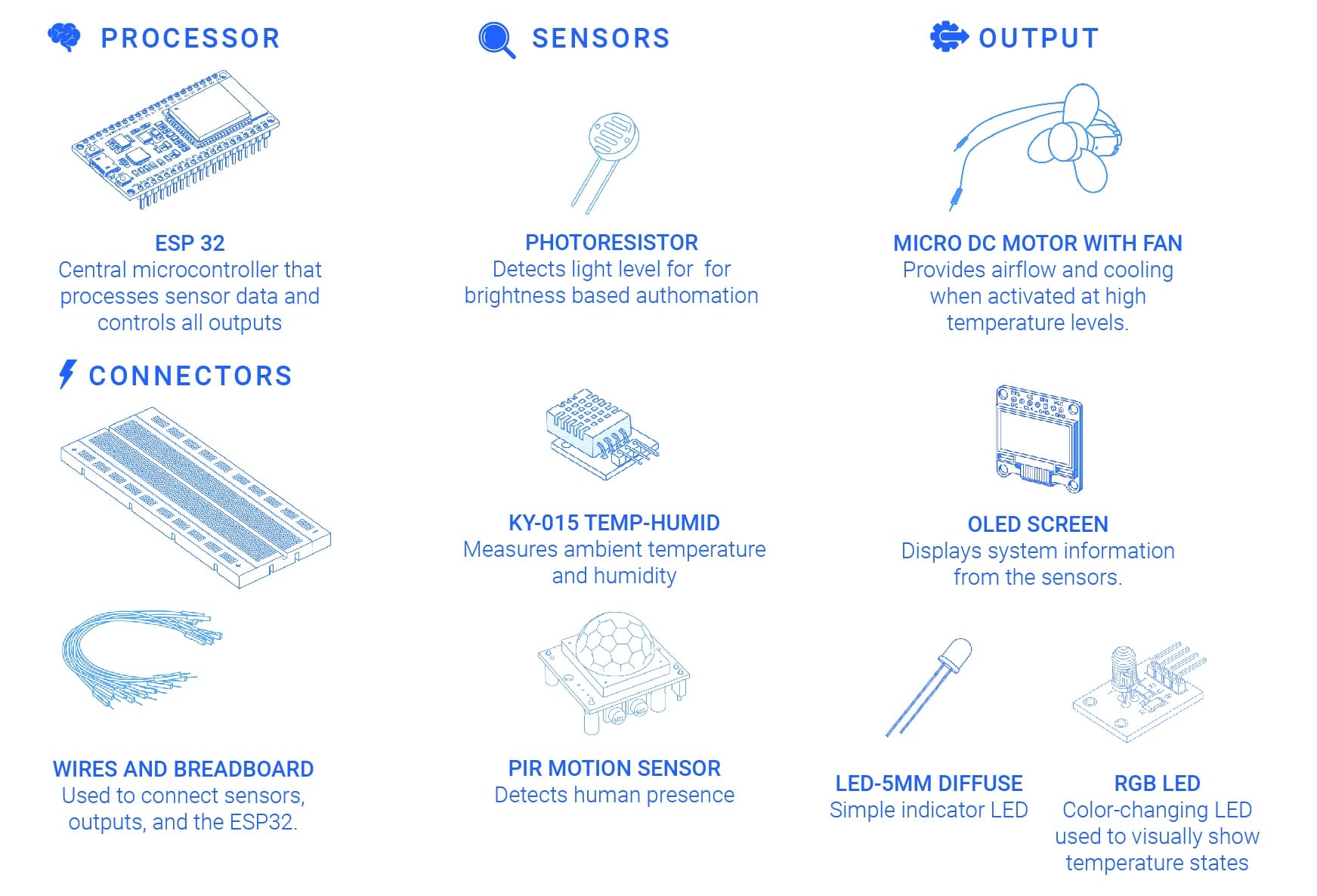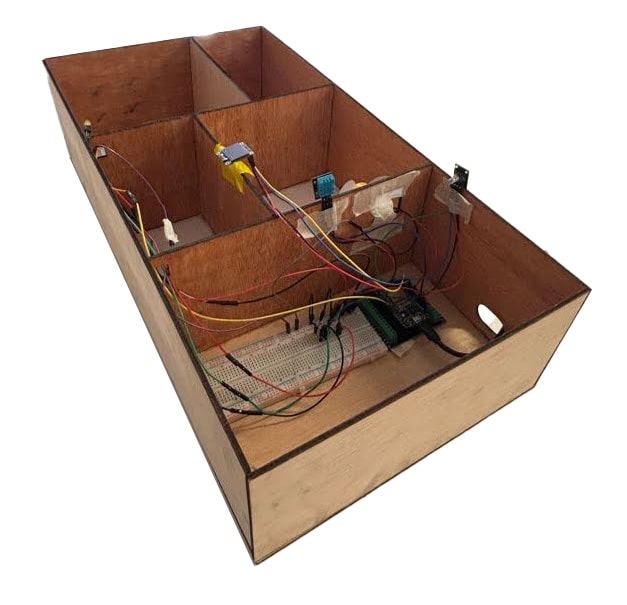This project showed how real-time, intelligent control can transform buildings into more comfortable and efficient spaces. By replacing static systems with adaptive regulation, we can reduce energy waste while creating healthier, more responsive environments for the people who use them.
Concept
Modern indoor spaces often fall short of providing true comfort and efficiency because they depend on outdated, static control systems. These systems are unable to intelligently adapt in real time as temperature, humidity, air quality, lighting, and occupancy continuously shift throughout the day.
The ComforTECH project was developed as a response to this limitation. Our goal is to create an intelligent, self-adjusting environment—one that remains aware of changing indoor conditions and adapts instantly. By monitoring temperature, humidity, lighting, and occupancy in real time, the system can continuously optimize comfort, enhance air quality, and reduce unnecessary energy use.
Process

Simulation

The system reacts to temperature changes: the sensor reads the current value, assigns it to a range, and triggers the corresponding response.

The system controls lighting based on both brightness and occupancy.The light sensor first determines whether the room is dark or not; if the room is dark, the motion sensor then checks for movement.
Components

These are the key components that bring the smart environment system to life. Sensors capture temperature, humidity, light, and motion, feeding real-time data to the ESP32 microcontroller. Wires and the breadboard form the physical network that connects and powers each module. Outputs—like the fan, OLED screen, and LEDs—translate data into visible or functional responses. Together, these elements create an adaptive system capable of sensing, interpreting, and reacting to its surroundings.
Circuits diagram

This diagram gives an overview of how every sensor and output connects to the ESP32. The board constantly reads temperature, motion, and light levels, then reacts by adjusting the LEDs and fan. Each connection plays a role in helping the system make smart, automated decisions about the environment. Thanks to its modular layout, new components can be added easily as the project grows.
Prototype


Limitations
The challenges we faced were mainly linked to the low reliability of the sensors used. Their readings often fluctuated or drifted, making the collected data inconsistent and sometimes inaccurate. Since the system reacts directly to these inputs, unreliable measurements occasionally triggered incorrect responses. Overall, sensor precision proved to be the main limitation, affecting the stability and performance of the entire setup.
Future optimization
The next deployment directions focus on improving the system’s accuracy and scalability. Future iterations could integrate higher-precision sensors to ensure more reliable environmental data. Machine-learning models may also be introduced to predict changes rather than simply react to them.
Additionally, a dedicated dashboard or app-combined with modular plug-and-play components that would support easier monitoring, control, and customization across different spaces.
Reference
- Serepas, A., Kovacs, T., & Horváth, G. (2025)., Lightweight embedded IoT gateway for smart homes based on an ESP32 microcontroller.
- Enhancing indoor environmental quality through IoT: A review of applications and challenges., ITcon – Journal of Information Technology in Construction.
- ESP32 Arduino Smart Home w/Bluetooth, LEDs, Fan, DHT11, 1602A & Smartphone, https://www.youtube.com/watch?v=n-r-EIk4a50&t=2s

